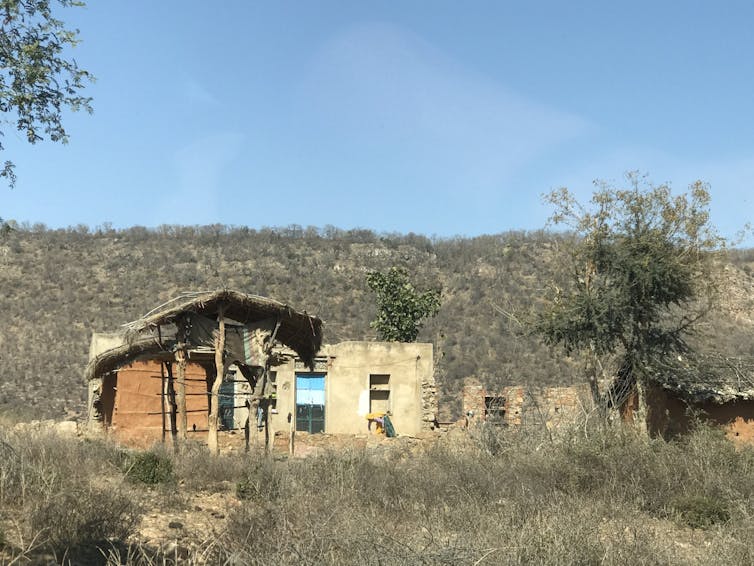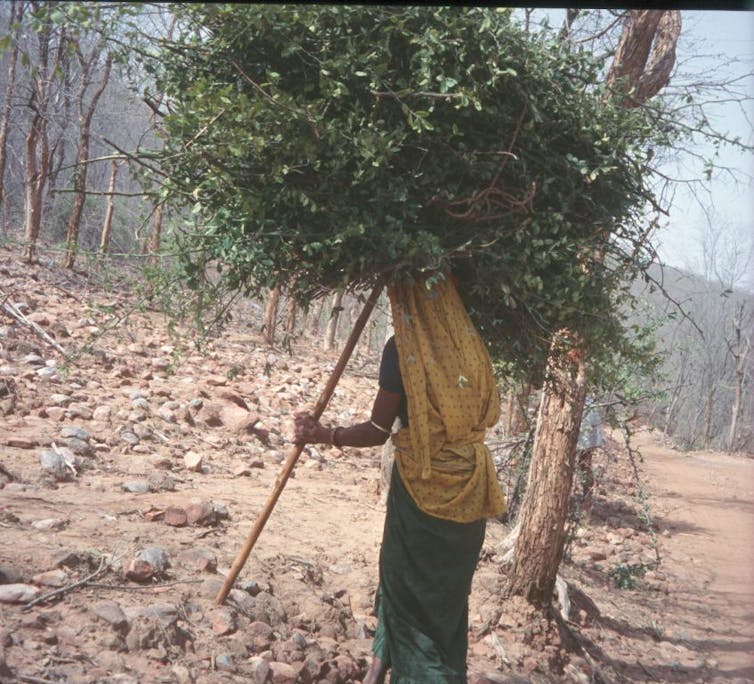British colonialism turned India’s tigers into trophies. Between 1860 and 1950, more than 65,000 people were shot for their skins. The fortunes of the Bengal tiger, one of the largest big cat species on Earth, did not improve significantly after independence. Hunting of tigers – and the animals they eat, such as deer and wild boar – continued, while large parts of their forest habitat became farmland.
India established Project Tiger in 1972, when fewer than 2,000 tigers were left; It is now one of the longest running conservation programs in the world. The project aims to protect and increase tiger numbers by creating reserves from existing protected areas such as national parks and wildlife sanctuaries. Part of that process involves forcing people to move.
In globally protected areas, nature conservationists may find themselves conflicting with the needs of local communities. Some scientists have argued that, for them to thrive, tigers need forests that are completely free of people who might otherwise graze animals or collect firewood. In some documented cases, tiger populations have actually recovered after people were removed from tiger reserves.
But in pitting people against wildlife, translocation promotes larger problems that do not serve the long-term interests of conservation.
Rehabilitation Policy of India
Under Project Tiger, 27 tiger reserves were established by 2005, each covering between 500 and 2,500 square kilometres. There is a center of tiger reserve in which people are prevented from grazing livestock, hunting wildlife and collecting wood, leaves and flowers. A buffer zone surrounds it. Here, such activities are permitted, but regulated.
About 3,000 families were relocated from these core areas in the first three decades of the project, and from 2005 to 2023, approximately 22,000 families were relocated. Most transfers were involuntary and some pushed the displaced into deep poverty.

The first translocation to the Sariska Tiger Reserve in Rajasthan, north-western India, was carried out during 1976–77. Some families returned to the reserve after being given land unsuitable for farming as compensation. It was a poor advertisement for relocation which few other communities willingly chose.
After being relocated from the Rajaji Tiger Reserve in 2012, Gujjar herders who earn their living by grazing buffalo were induced to cultivate the new land. With little experience in agriculture and being deprived of a traditional source of income, many people struggled to adjust.
Gujjars at least got access to water pumps and electricity. In one case, in the Bhadra Tiger Reserve in Karnataka, southwestern India, relocation was less painful because quality agricultural land was offered to people who already had farming experience.
Those who lost the right to graze livestock or collect forest produce in the newly established tiger reserves took up labor in tea and coffee plantations or factories.
Despite extensive translocation, the tiger population in India continues to decline, reaching an all-time low of less than 1,500 in 2006. Tigers became extinct in Sariska and Panna tiger reserves in 2004 and 2007 respectively.
Local extinction in Sariska prompted the government to seek the help of tiger biologists and social scientists in 2005. This task force found that poaching of tigers was still occurring, with their claws, teeth, bones and skin harvested for use in Chinese medicine. Mining and grazing also continued in many reserves.
corridors of power
The Tiger Task Force acknowledged that working with the local community helped prevent poaching and forest fires. The Soliga tribes of the Biligiri Ranganathaswamy Temple Tiger Reserve in Karnataka decided not to relocate even after being offered compensation, but instead began work on uprooting invasive plants like lantana and curbing poaching and logging. The Soligas are among the very few communities that have been awarded rights in tiger reserves.
Similarly, in the Parambikulam Tiger Reserve in Kerala, a state on India’s tropical Malabar Coast, communities that were not relocated found work as tour guides and forest guards. The people here have augmented their income by collecting and selling honey, wild gooseberry and medicinal spices under the joint supervision of the community and forest department officials. As a result many families have been able to abandon animal husbandry, reducing grazing pressure on the forest.

Despite these successes, the government’s transfer policy remains in place.
The number of tigers is expected to exceed 3,000 by 2022, but Project Tiger shows that translocation alone cannot conserve tigers indefinitely.
A great opportunity awaits. Over 38 million hectares of forest, suitable habitat for tigers, lies outside the tiger reserves. Declaring these forests as “corridors” that allow tigers to move between sanctuaries could reduce the risk of inbreeding and local extinction and strengthen the recovery of India’s tigers.
Studies of some tiger reserves show that a large number of villagers would support further resettlement if it meant gaining access to drinking water, schools, health care and jobs at the resettlement sites. A portion of the US$30 million (£22.7 million) spent annually by Project Tiger should be used to make the transfer fair. Or even better, promote the community-based conservation fostered in the Biligiri Ranganathaswamy Temple and Parambikulam tiger reserves.
,Author: Dhanapal Govindarajulu, Postgraduate Researcher, Institute for Global Development, University of Manchester; Divya Gupta, Assistant Professor, Binghamton University, State University of New York, and Ghazala Shahabuddin, Visiting Professor of Environmental Studies, Ashoka University)
,disclosure statement: The authors do not work for, consult, own shares in, or receive funding from any company or organization that would benefit from this article, and have disclosed no relevant affiliations beyond their academic appointment. have done)
This article is republished from The Conversation under a Creative Commons license. Read the original article.
(Except for the headline, this story has not been edited by NDTV staff and is published from a syndicated feed.)







